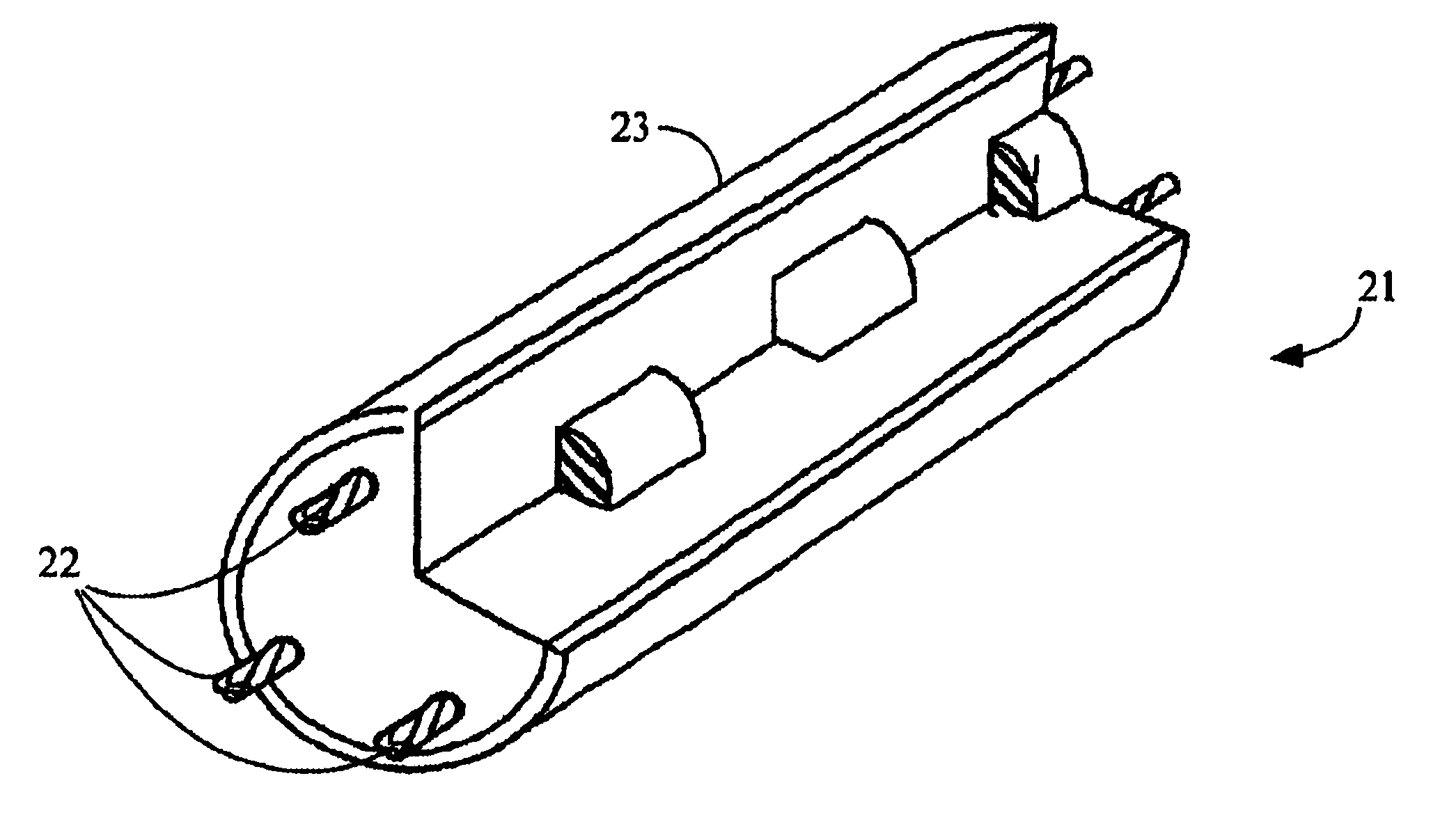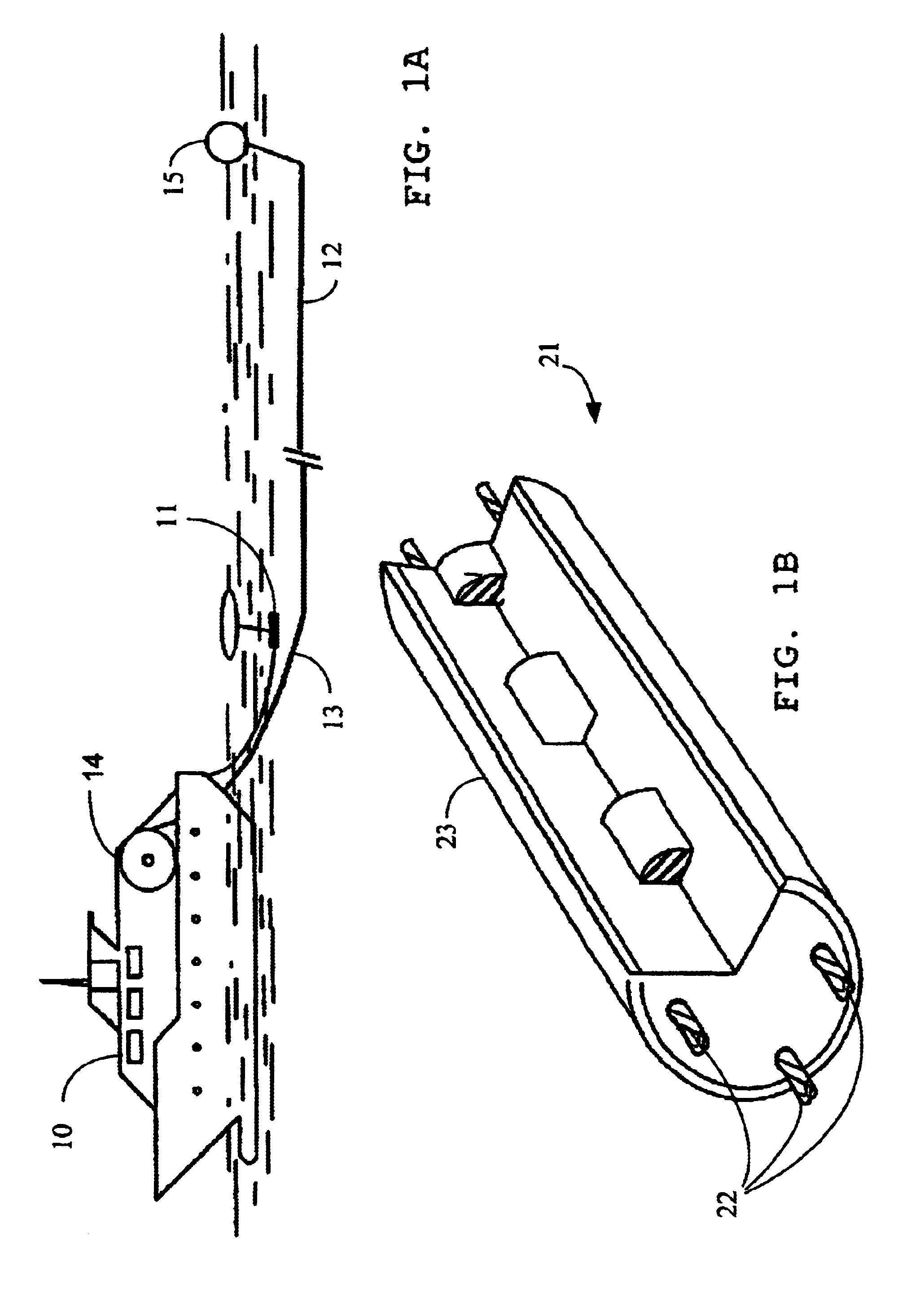Marine seismic acquisition system and method
a seismic acquisition and seismic technology, applied in the field of marine seismic surveying, can solve the problems of invariably contaminated signals received by the hydrophones in the streamer, generating bulge waves (or breathing waves) which propagate down, adding noise and corrupting detected seismic signals
- Summary
- Abstract
- Description
- Claims
- Application Information
AI Technical Summary
Benefits of technology
Problems solved by technology
Method used
Image
Examples
Embodiment Construction
FIG. 1A shows a seismic vessel towing an acoustic source and streamer through a body of water. The seismic vessel 10 pulls at least one seismic source 11 and at least one seismic streamer 12. The streamer 12 is secured to the vessel 10 by a lead-in cable 13 which is attached to a cable storage reel 14 located aboard the vessel. A tail buoy 15 is attached to the distal end of the cable by a long stretch of rope or similar material. The tail buoy may optionally be provided with an acoustic, electromagnetic or visual device used to locate the end of the streamer cable.
As shown in FIG. 1B, each section of the streamer cable 12 contains a plurality of hydrophones 21 well known in the seismic art. The hydrophones are interconnected by a transmission line (not shown) to a remote recording device located aboard the vessel. Adjacent hydrophones are not wired so as to form groups which generate a single output. Instead, each hydrophone is set to generate a separate output g.sub.i which is sub...
PUM
 Login to View More
Login to View More Abstract
Description
Claims
Application Information
 Login to View More
Login to View More - R&D
- Intellectual Property
- Life Sciences
- Materials
- Tech Scout
- Unparalleled Data Quality
- Higher Quality Content
- 60% Fewer Hallucinations
Browse by: Latest US Patents, China's latest patents, Technical Efficacy Thesaurus, Application Domain, Technology Topic, Popular Technical Reports.
© 2025 PatSnap. All rights reserved.Legal|Privacy policy|Modern Slavery Act Transparency Statement|Sitemap|About US| Contact US: help@patsnap.com



